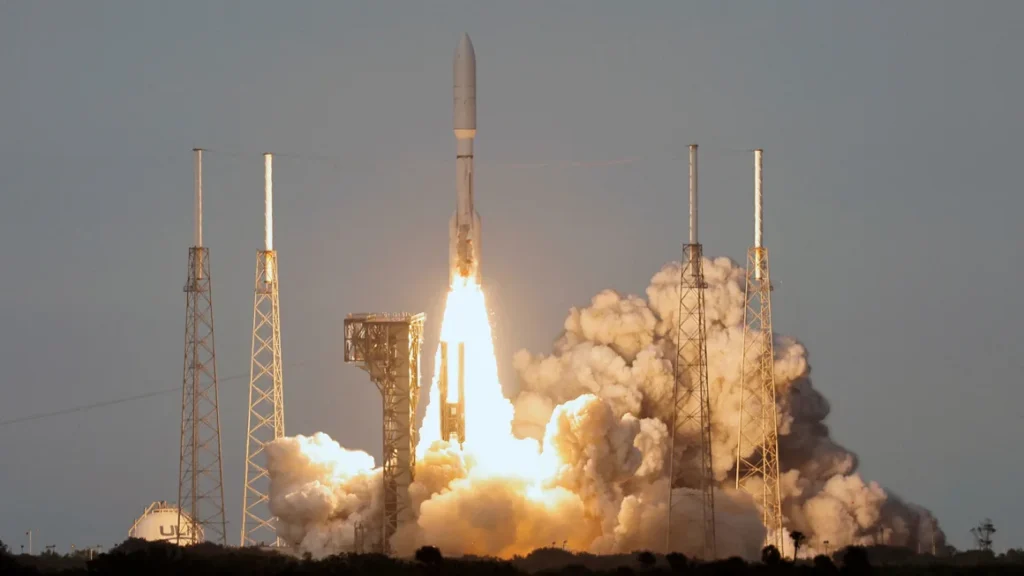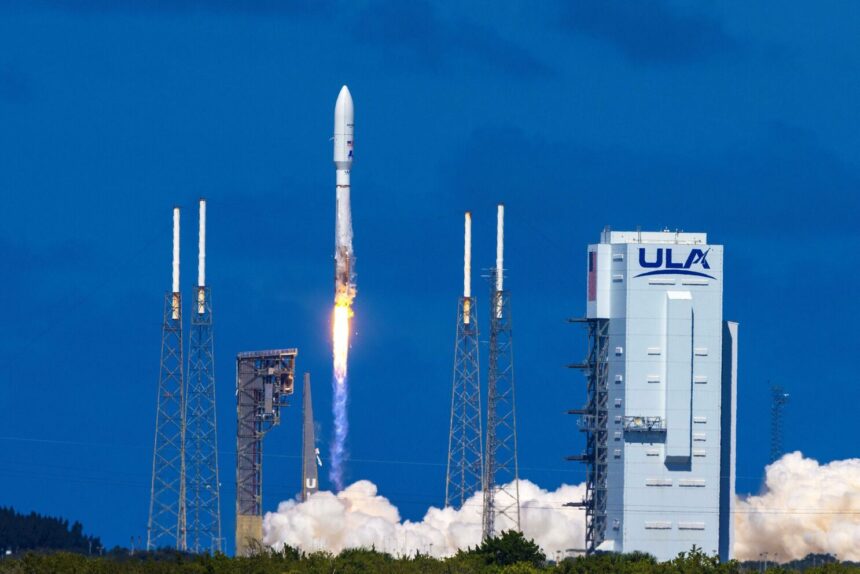Amazon has entered the race for satellite internet dominance with its Project Kuiper launch. On April 21, 2025, a batch of 27 satellites lifted from Cape Canaveral aboard an Atlas V rocket. This launch marks a significant milestone in Amazon’s efforts to compete with SpaceX’s Starlink and AST SpaceMobile, two major players in the growing satellite communications sector.
What’s Happening & Why This Matters
Amazon’s Project Kuiper aims to deploy a constellation of about 3,200 satellites in low-Earth orbit (LEO). The satellites will work to provide high-speed internet access to remote regions of the world where traditional broadband infrastructure is limited or unavailable. The project’s first phase is set to cover global internet connectivity, posing a direct challenge to SpaceX’s Starlink, which already has around 4.6 million users worldwide.

Amazon’s Project Kuiper is not just about technology but about global positioning. The company intends to provide internet access to underserved areas, bringing connectivity to rural and remote areas. Both Kuiper and Starlink target similar customer bases—those in regions where ground-based broadband options are either too costly or nonexistent. The race to offer satellite-based internet services has become more competitive, with Amazon entering a space already dominated by Elon Musk’s SpaceX.
While SpaceX has established its Starlink network, the project’s financial outlook remains unclear because the company is privately held. In contrast, Amazon is a publicly traded company with more financial visibility. However, experts like Craig Moffett, senior managing director at MoffettNathanson, express concerns about Amazon’s late entry into the market. According to Moffett, “Kuiper has a long way to go to catch up with SpaceX,” adding that the venture may not be an attractive investment given its high initial costs.
Kuiper’s first satellites will orbit approximately 280 miles above Earth, slightly lower than Starlink’s 340-mile altitude. The closer proximity of LEO satellites like those in Kuiper and Starlink offers faster speeds, which traditional satellites in geostationary orbits (at roughly 22,236 miles above Earth) cannot match. This gives Kuiper a competitive edge in terms of latency and speed.

(Credit: Reuters)
Sparing No Expense
The cost of launching and maintaining the Kuiper system is substantial. Raymond James, a financial services firm, estimates that Amazon could spend as much as $17 billion upfront to set up the first generation of Kuiper satellites. Even with revenue generation from the service, it could cost Amazon between $1 billion and $2 billion annually to keep the project running.
Despite these costs, Amazon is pressing forward with its vision. Rajeev Badyal, Vice President of Project Kuiper, says this launch is just the beginning. “This is the first time we’ve flown our final satellite design and deployed so many satellites at once,” he said. “No matter how the mission unfolds, this is just the start of our journey.”
Geopolitical Impact and Competition
Amazon’s entry into the satellite market could also have geopolitical implications. SpaceX’s Starlink has faced controversies, particularly over its involvement in war zones, such as its use in Ukraine. Elon Musk has often been in the media spotlight, creating tension between the company and certain governments. With its founder, Jeff Bezos, Amazon may become a more neutral player internationally, especially among governments that want an alternative to Musk’s influence.
However, SpaceX isn’t the only competitor Amazon faces. Companies like OneWeb are also building their satellite constellations, with some European governments looking to strengthen their own satellite communications networks for national security reasons. This creates a complex competitive environment for Amazon’s Project Kuiper.
TF Summary: What’s Next
The satellite internet race is heating up as Amazon joins SpaceX and AST SpaceMobile in the quest to provide global connectivity. While Kuiper faces immense challenges, particularly in catching up with Starlink’s established network, Amazon’s vast resources and experience with global infrastructure give it a fighting chance. The future of satellite-based internet is bright, but only time will tell if Amazon can carve out a significant market share.
As Project Kuiper progresses, Amazon will continue to face obstacles in scaling its satellite network and competing with SpaceX’s well-established Starlink. The satellite internet market will continue evolving, with new players emerging and governments deciding how much control they want over their satellite networks.
— Text-to-Speech (TTS) provided by gspeech


